The quilt blocks on the Thumb Quilt Trail are built and painted by many volunteers.
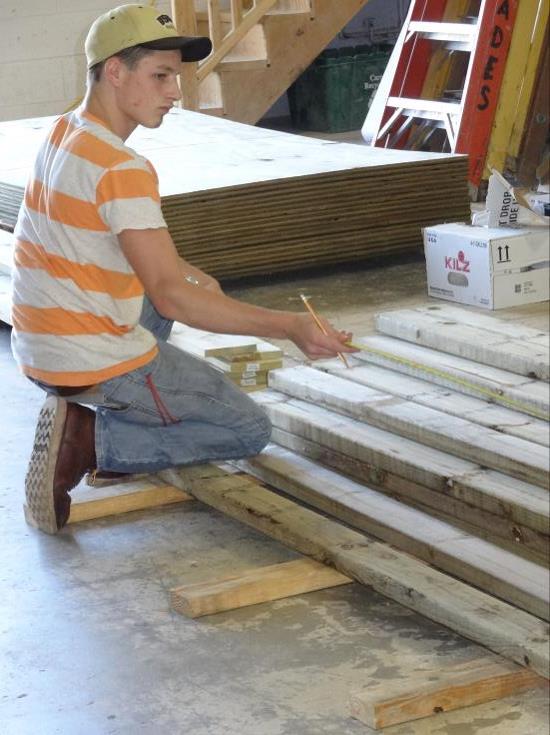 |
We are very fortunate that the Tuscola Technology
Center allows us to use their wood shop classroom
to build the blocks.
Once the pile of lumber arrives at the Tech Center
volunteers cut and assemble the pieces for the blocks.
This young man, a student at the Tech Center, volunteered
his time to help with the process.
Most of the blocks on the Thumb Quilt Trail are
8' X 8'. Some are 6' X 6' . The largest one is 16' X 16'
which is on the Shagene Barn. |
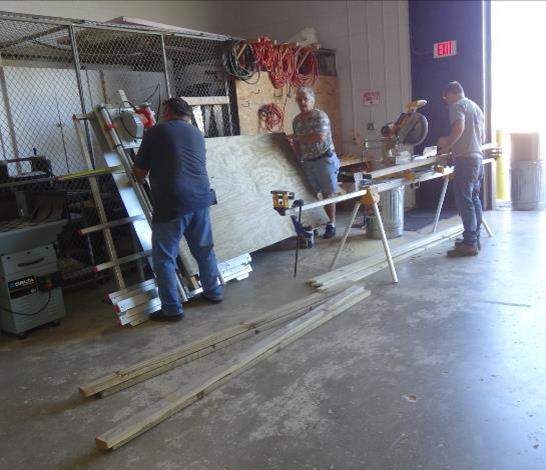 |
Everything gets cut into the proper lengths. Once that is
done, the block building begins. |
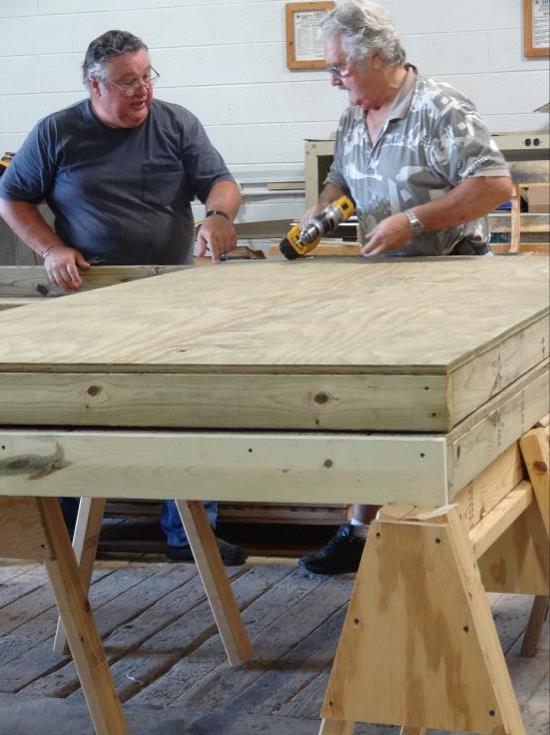 |
Bob Frazer and Butch Binder are our expert builders.
They've worked long and hard to build quality blocks,
and have the process down pat!
The 8' X 8' blocks are built from two sheets of plywood.
The frame of the block is made from 2" X 4", although
the top piece is larger so that there's a lip over the front
of the block in order to help protect it. |
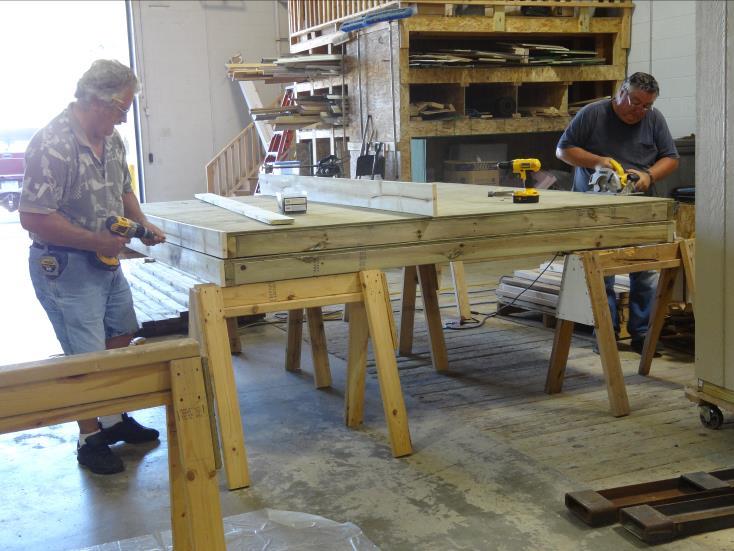 |
Team work! |
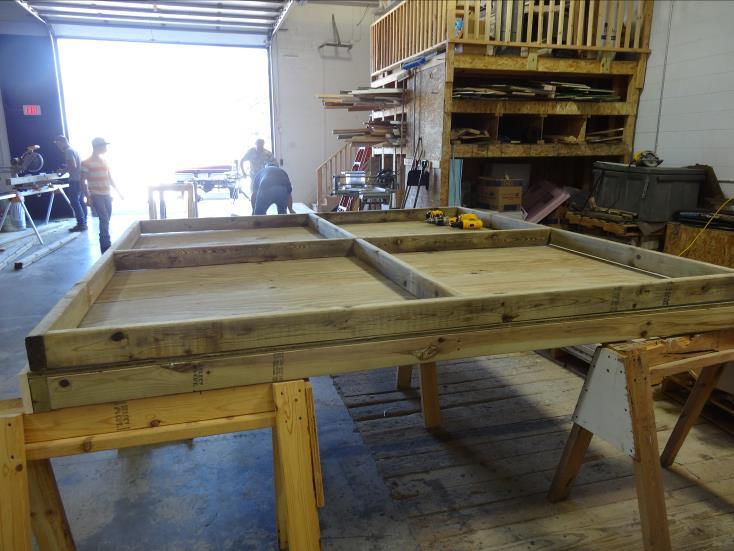 |
This shows the supports on the underside/backside of the
block which are made from more 2" X 4". |
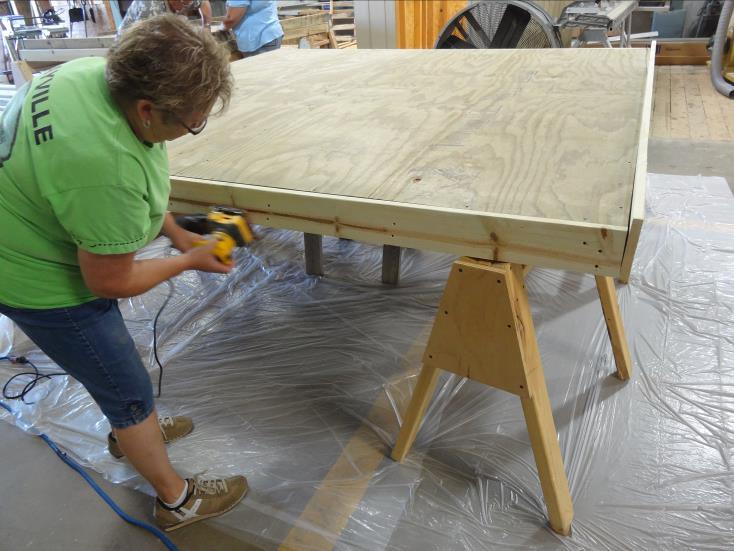 |
If you look closely at the right-hand board at the top of
the block you can see that it extends over the top to help
protect it.
|
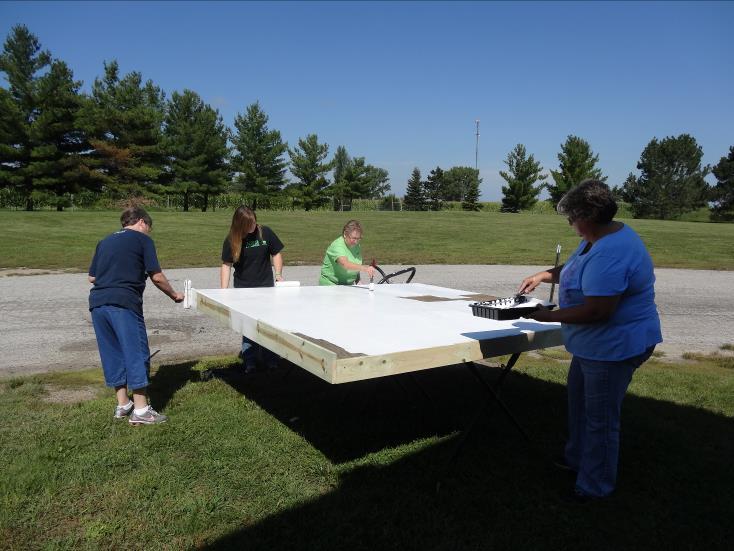 |
Once the block is constructed, then the painting begins with
two coats of Kilz paint.
We work on several blocks at a time, so that by the time
we complete painting the first coat on the last block,
the first block is dry and we can put on the second coat of paint.
|
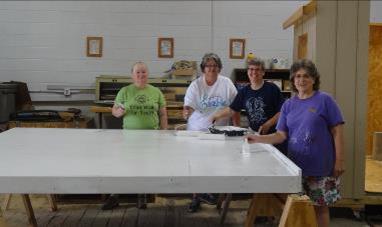 |
Here's the Thumb Quilt Trail committee hard at work: (l to r) Pat Frazer, Pam
Stillwell-Binder, Ruth Steele, Rose Putnam. |
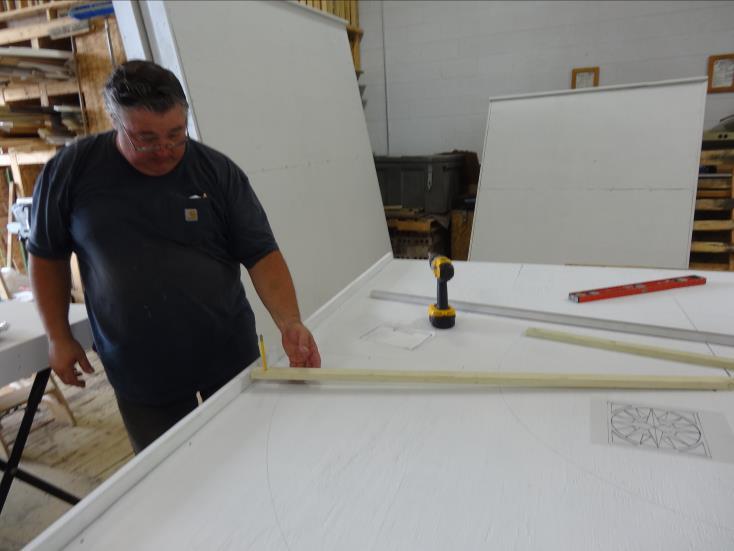 |
After the paint dries, it's time to draw on the block pattern.
At first we tried using an overhead projector to enlarge the
pattern, but this didn't work as well as we hoped. It distorted
the lines. |
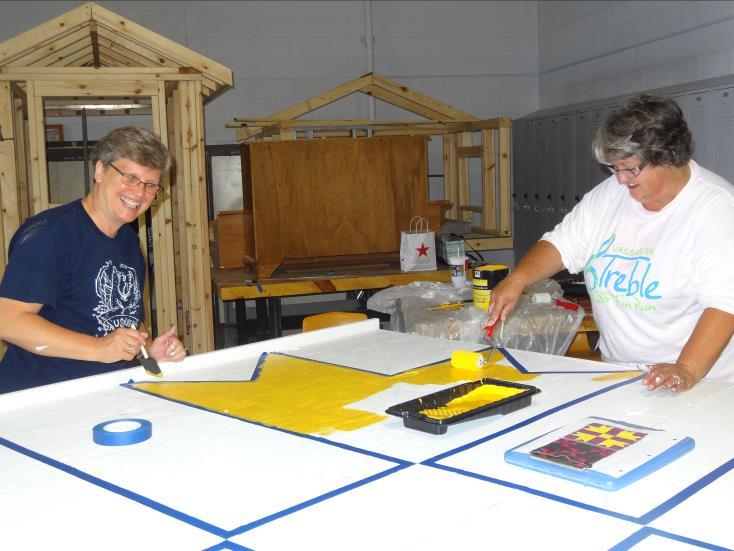 |
After the design is drawn, painter's masking tape
is affixed to the lines masking off areas of one color.
Here we're beginning to paint all the yellow areas of
the Kester Block. Once these areas are painted with
two coats, then the masking tape is removed and new
added so that the next color may be painted.
|
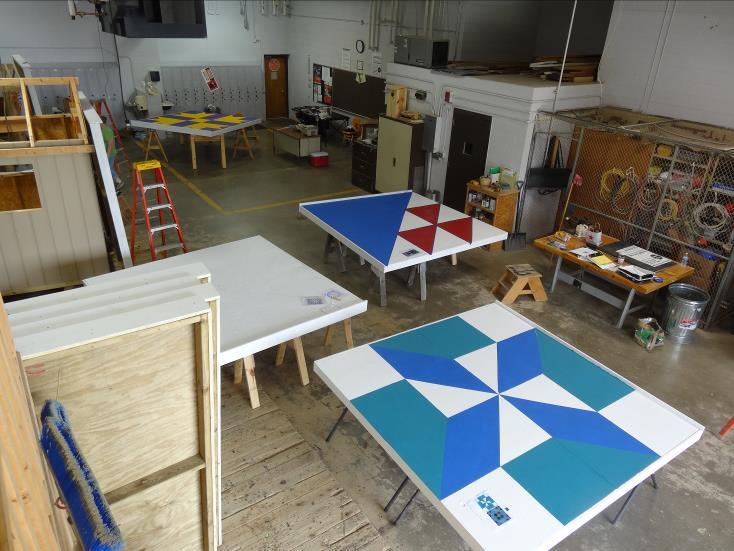 |
It's fun to see how the blocks progress throughout
the work day.
|
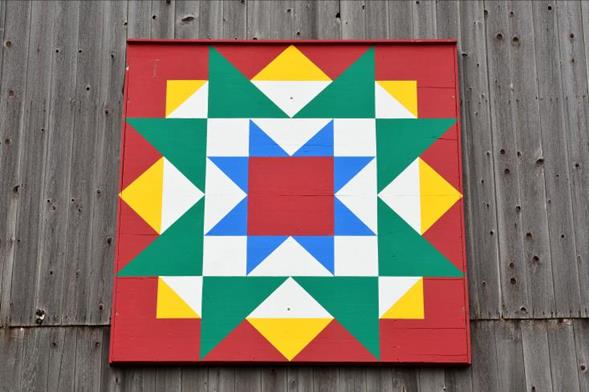 |
The painting process takes longer and requires
patience when the block is more intricate and
has more colors. But that's all part of the fun!
|
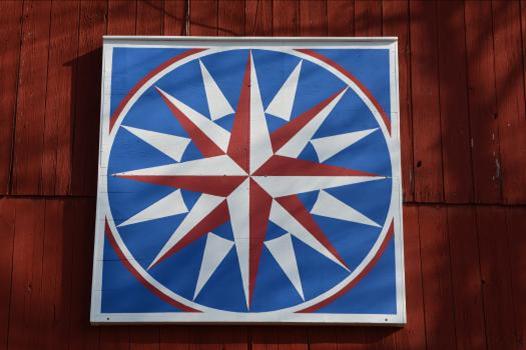 |
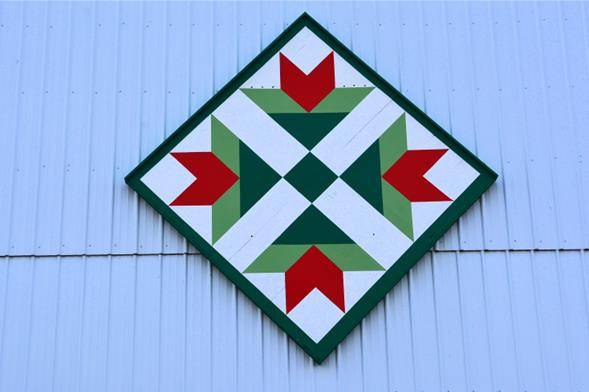 |
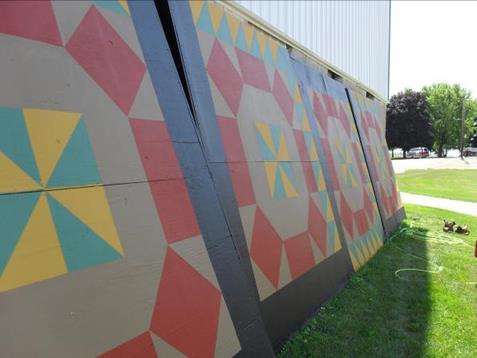 |
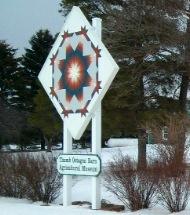 |